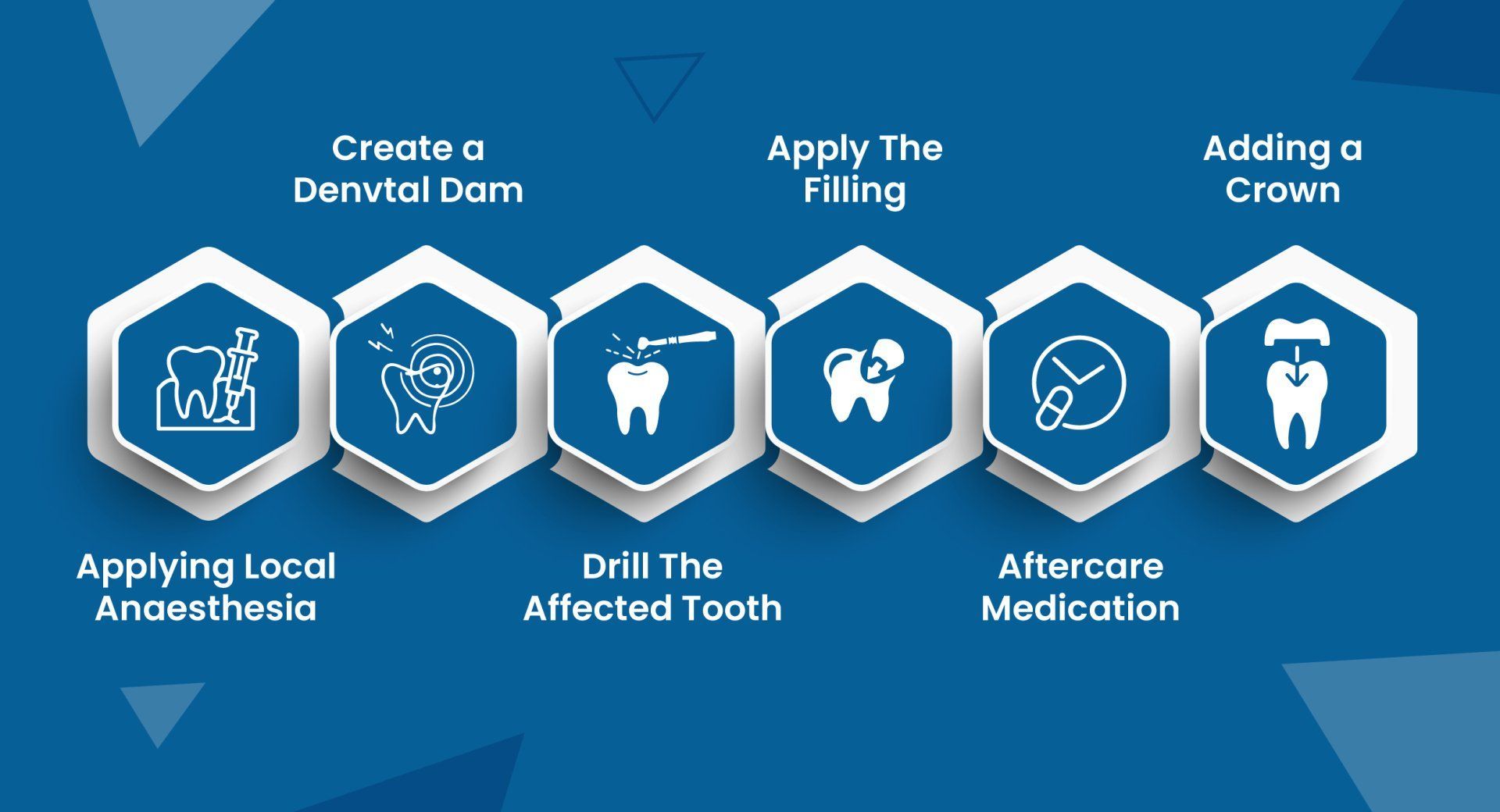
Get in touch
(858) 487-9444
ddssurfing@yahoo.com
**AVAILABLE FOR DENTAL EMERGENCIES**
DR. James Spalenka D.D.S., F.A.G.D.
Masters Degree in Implantology, Owner and Dentist
What Are the Steps Involved In Root Canal Treatment?
The best root canal process involves a few primary steps. Let's look at the main stages of the process.
1) Applying Local Anaesthesia
The dentist starts by numbing the area. A pinprick of injection is given at the site. This will make the area numb and prevent any feeling of discomfort for the rest of the procedure. A dentist may allow you to sit back and relax for a few minutes until the area is completely numb before they begin the process.
In some cases, a dentist may opt for a dental sedative. This will make you unconscious for the duration of the procedure. Most dentists don't recommend it, and usually, a local anaesthetic is enough to tide over the rest of the procedure.
2) Create A Dental Dam
A dental dam is a thin sheet of vinyl or rubber that is placed between the impacted tooth and the rest. It helps the dentist focus on a specific tooth. It blocks the nearby teeth preventing accidentally disturbing them during the entire process.
A dental dam creates a sterile environment for the procedure and the affected area. It reduces the risk of other bacteria in the mouth from entering the site.
Placing the dental dam is a simple step and barely a few minutes. The dentist will check to ensure that the dam is firmly in place before continuing.
3) Drill The Affected Tooth
The main part of the procedure starts with drilling into the tooth. It is done to get access to the decayed or dead pulp or tissues at the root of the teeth. The dentist will use specialist tools to clean out the area. After cleaning, they use tools to carve out or form a canal-like area later filled to protect the tooth.
The dentist will rinse the area and ensure that it's clean before moving on to the filling stage of the procedure.

4) Apply The Filling
Dentists use a material similar to rubber for filling in the canal. The material is commonly known as gutta-percha. It is set in place by an adhesive that seals it firmly in the area. It may be heated slightly to help it set firmly in place. This step is essential as it is crucial that the filling is sealed in place.
The dentist will then seal the hole made to create the canal. This prevents bacteria from entering the tooth. In some cases, the dentist may insert a post during the process. Posts are used only when the tooth needs extra strength or support. If the filling is temporary, you will be asked to come back to get a permanent filling or crown in a few days.
5) Aftercare Medication
The aftercare for the root canal is pretty simple. You will be prescribed antibiotics for the healing and painkillers if you feel pain around the site. You will also receive a set of instructions to ensure that no infection occurs and the tooth heals naturally.
A few common Do's and Don’ts include:
• Brush normally and use special paste if you feel sensitivity in the area. • Avoid hard foods like meat. Stick to a soft diet that includes foods like rice and porridge for a few days. • Hydrate well. Drink lots of fluids to keep the body strong. • Gargle with saline water 2-3 times a day, especially after meals. Doing so prevents any possible infections to the tooth. • Follow the antibiotics course completely. You can take painkillers for 1-2 days as prescribed but can discontinue if you feel better. • Avoid extra hot or cold beverages for a few days.
It's important not to smoke or drink alcohol until the antibiotics course is complete.
6) Adding A Crown
In cases where the root canal was performed on a back tooth or the tooth has more damage, you may have to come back for a crown. The crown comes in different materials and price ranges depending on its durability. It adds structure and strength to a weak tooth. Your dentist will fabricate a custom crown to go with your normal tooth profile. Once the crown is installed, you can continue the usual biting and chewing actions.
SERVICES
Contact Details
James Spalenka, D.D.S., F.A.G.D.
16766 Bernardo Center Dr., Ste. 105 San Diego, CA 92128 USA
CALL US: (858) 487-9444
Business Hours
Monday - Friday
9:00 am - 5:00 pm
Saturday
By Confirmed Appointment
Sunday: Closed
© Copyright 2024 | All Rights Reserved | James Spalenka, D.D.S., F.A.G.D.


